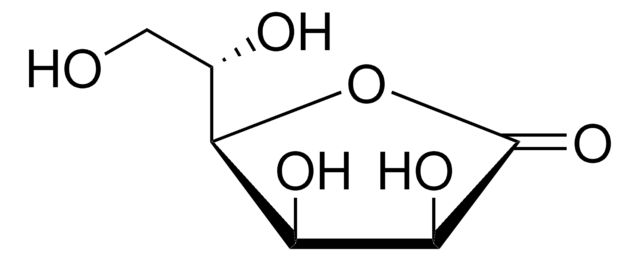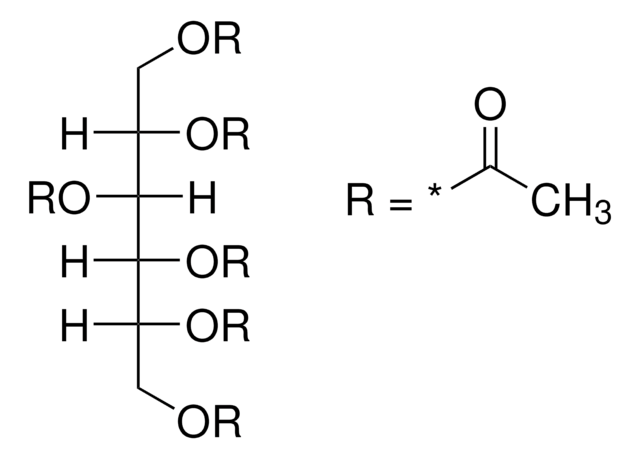Kluczowe dokumenty
240850
D-Sorbitol
99% (GC)
Synonim(y):
D-Glucitol
About This Item
Polecane produkty
gęstość pary
<1 (vs air)
Poziom jakości
ciśnienie pary
<0.1 mmHg ( 25 °C)
Próba
99% (GC)
Postać
powder
aktywność optyczna
[α]20/D +104°, c = 0.4 in acidified ammonium molybdate
kolor
white
przydatny zakres pH
5.0-7.0 (25 °C, 182 g/L)
mp
98-100 °C (lit.)
rozpuszczalność
water: soluble 182 g/L at 20 °C (68 °F )
ciąg SMILES
OC[C@@H](O)[C@@H](O)[C@H](O)[C@@H](O)CO
InChI
1S/C6H14O6/c7-1-3(9)5(11)6(12)4(10)2-8/h3-12H,1-2H2/t3-,4+,5-,6-/m1/s1
Klucz InChI
FBPFZTCFMRRESA-JGWLITMVSA-N
Szukasz podobnych produktów? Odwiedź Przewodnik dotyczący porównywania produktów
Zastosowanie
Działania biochem./fizjol.
Inne uwagi
Kod klasy składowania
11 - Combustible Solids
Klasa zagrożenia wodnego (WGK)
WGK 1
Temperatura zapłonu (°F)
Not applicable
Temperatura zapłonu (°C)
Not applicable
Środki ochrony indywidualnej
Eyeshields, Gloves, type N95 (US)
Wybierz jedną z najnowszych wersji:
Masz już ten produkt?
Dokumenty związane z niedawno zakupionymi produktami zostały zamieszczone w Bibliotece dokumentów.
Klienci oglądali również te produkty
Nasz zespół naukowców ma doświadczenie we wszystkich obszarach badań, w tym w naukach przyrodniczych, materiałoznawstwie, syntezie chemicznej, chromatografii, analityce i wielu innych dziedzinach.
Skontaktuj się z zespołem ds. pomocy technicznej






